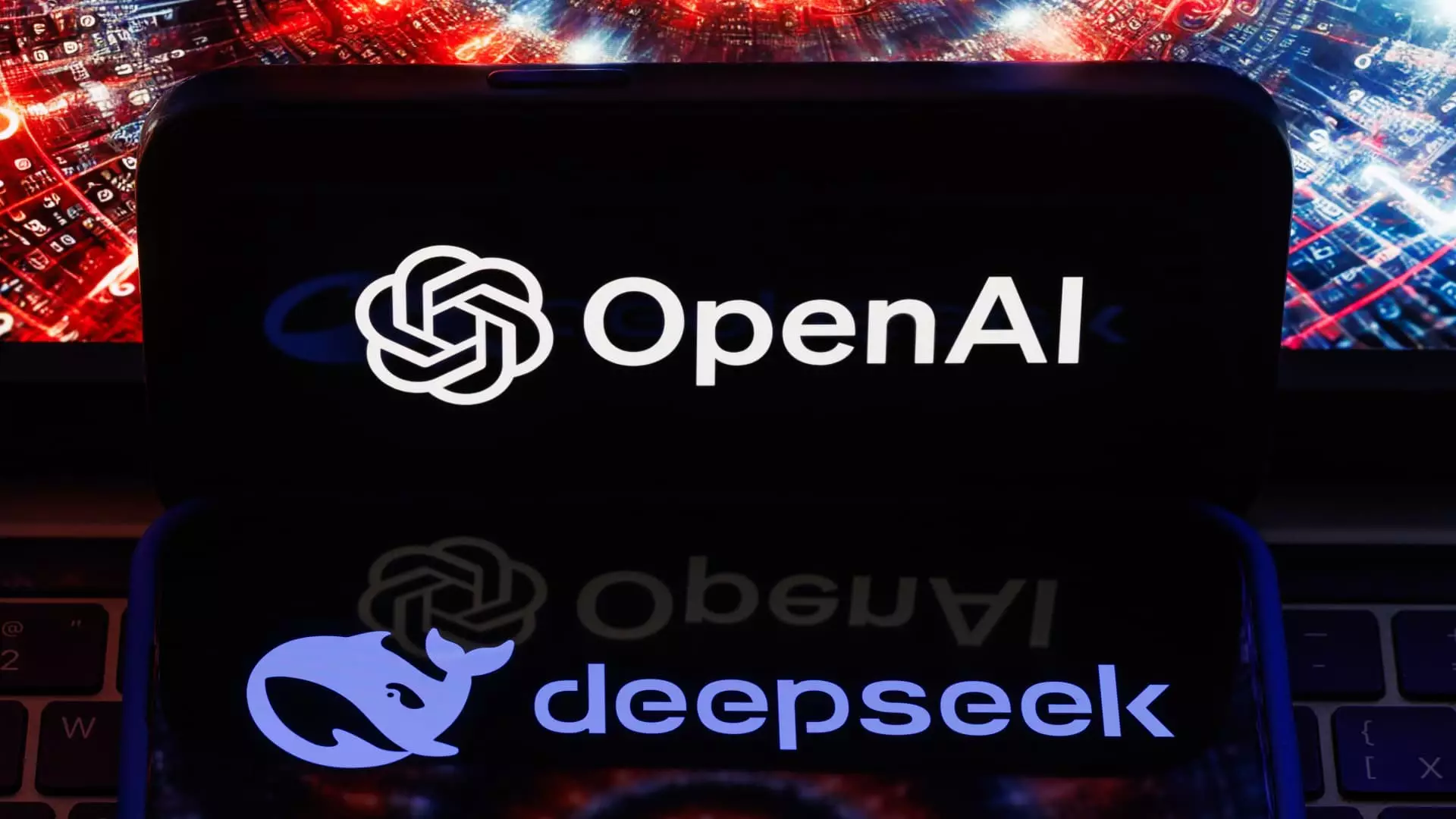The realm of artificial intelligence (AI) has long been characterized by fierce competition, particularly between the United States and China. With the recent developments at the Chinese AI research lab DeepSeek, the stakes of this technological race have risen dramatically. Leaders in the technology sector are beginning to reassess the dynamics of AI innovation and competition in light of DeepSeek’s impressive achievements, which challenge long-held assumptions about the capabilities of Chinese firms in the global AI landscape.
DeepSeek’s recent announcement regarding its new AI model—developed at a mere fraction of the cost compared to models from Western tech giants—has sparked considerable interest and concern among industry leaders. The lab reported a training cost of less than $6 million to develop its cutting-edge AI, while Western counterparts have invested vast sums—often reaching into the billions. Chris Lehane, OpenAI’s Chief Global Affairs Officer, highlighted the significance of this cost-efficiency, suggesting that it marks a clear sign of escalating competition between U.S.-led democratic AI frameworks and those originating from an authoritarian regime like the Chinese Communist Party (CCP).
Such developments prompt a critical examination of the Western narrative. Historically, there has been a prevalent belief that the U.S. maintains a decisive edge in AI because of its access to advanced hardware and robust funding. However, DeepSeek’s model appears to upend this notion, demonstrating significant technological advancement without the same financial burdens. This shift could signal a fundamental change in understanding the trajectory of AI development, urging Western stakeholders to reevaluate their positions.
While DeepSeek’s innovations are prevalent, the lab has also been increasingly scrutinized for its approach to sensitive topics. Notably, questions around censorship arise in instances where the AI assistant fails to address events like the Tiananmen Square massacre. Responses similar to “Sorry, that’s beyond my current scope” have raised red flags about the potential limitations of its application in sensitive or controversial areas. This censorship raises ethical questions about accountability and the integrity of AI systems.
Many critics highlight that, despite the impressive technical accomplishments, the lack of transparency surrounding DeepSeek’s operations and outputs could impede its acceptance in global markets, particularly where ethical standards are paramount. This demonstrates that achievements in technology must be matched by ethical considerations, especially as they pertain to human rights.
Experts in the field of international technology have noted that the rise of DeepSeek reflects a broader misunderstanding in the West of China’s capabilities and ambitions. Abishur Prakash, a strategic advisor, suggests that the belief in America’s unassailable position as a technological leader is becoming increasingly outdated. Instead, the competition landscape indicates that the gap between the U.S. and China has narrowed over an extended period, rather than as a sudden development.
This calls for a significant shift in how Western nations approach their strategies concerning technological investments and collaborations. Recognizing that the technological race is closely contested is critical for adapting policies that respond to emerging challenges and leveraging opportunities for growth across borders.
Despite the stirring reactions, many industry veterans remain skeptical about the direct threats posed by DeepSeek to established entities such as OpenAI and Anthropic. While DeepSeek’s newer R1 model has drawn attention, the general consensus is that it may not yet present an immediate significant risk. In fact, concerns about the authenticity of its claims relating to low operational costs have been raised as credible evaluations of expenses suggest that DeepSeek’s investment in hardware and R&D may exceed $500 million.
Furthermore, speculation regarding the sourcing of DeepSeek’s AI capabilities implies that much of their technology might leverage outputs from already established models without due acknowledgment. This dampens the perception of innovation, casting a shadow on the credibility of its achievements.
As the atmosphere of competition intensifies, the need for clear-eyed judgment, collaboration, and ethical standards becomes paramount. Both the U.S. and China find themselves at a crossroads, where understanding the implications of AI development is not only crucial for national interests but also for global stability. The future of AI innovations and the competitive landscape will rely heavily on how effectively stakeholders can navigate these emerging challenges together.
Ultimately, while DeepSeek’s advancements signal a stronger Chinese presence in the AI space, it is imperative to maintain a cautious perspective that acknowledges both the potential and the pitfalls of this rapidly evolving field. The race may be on, but the outcomes are still to be determined.


Leave a Reply